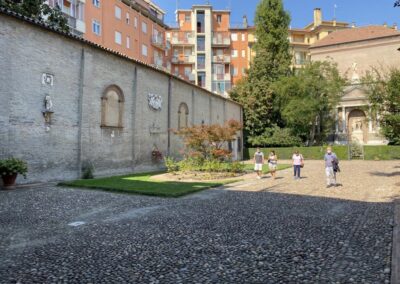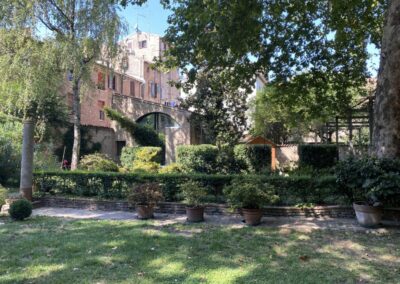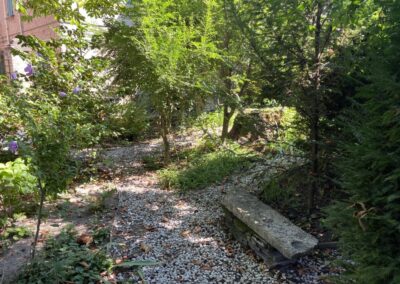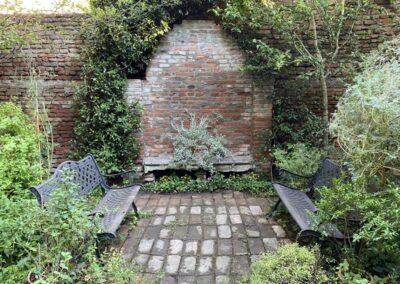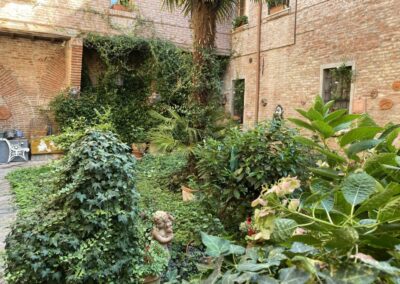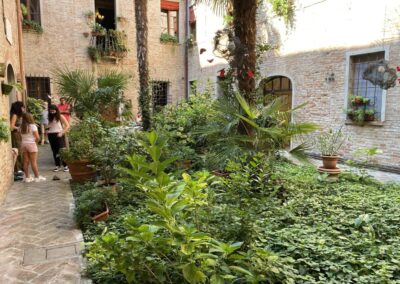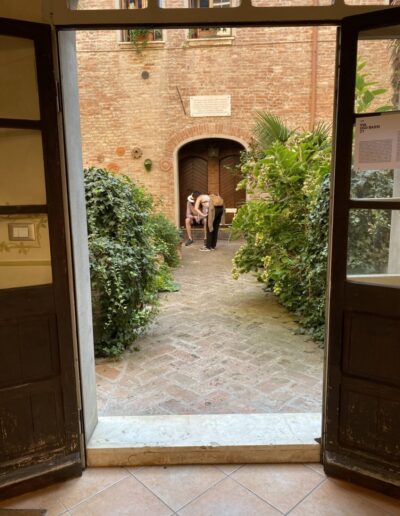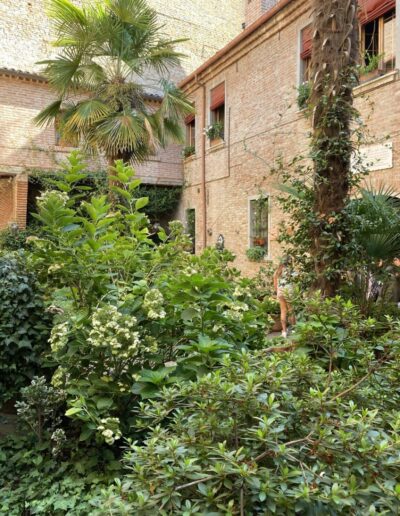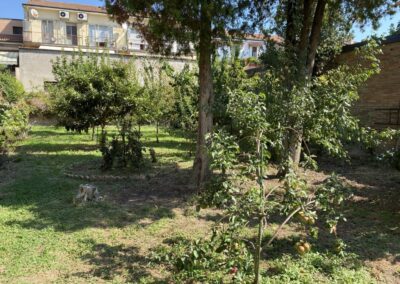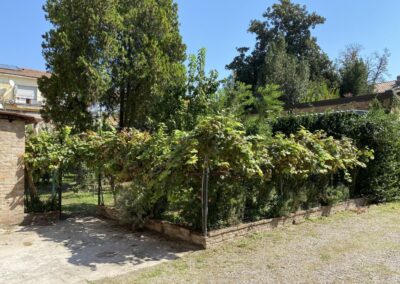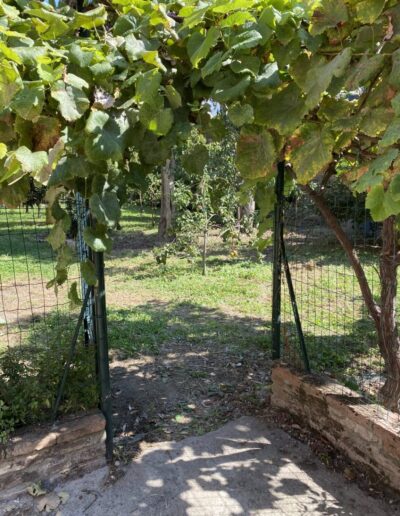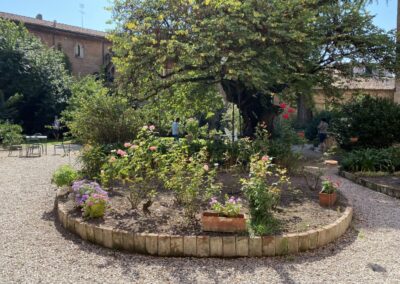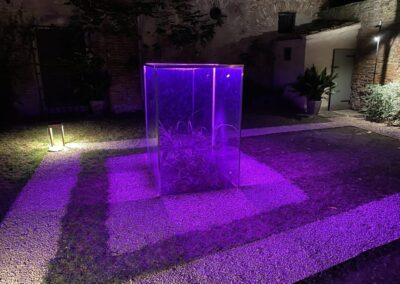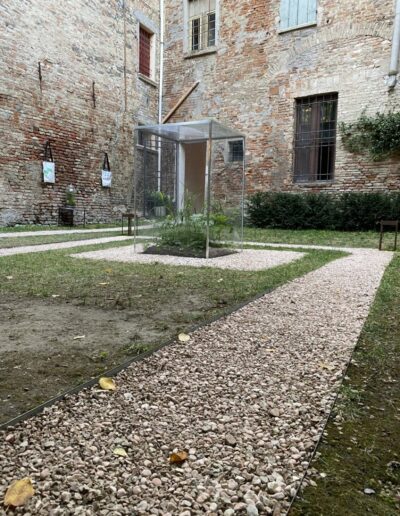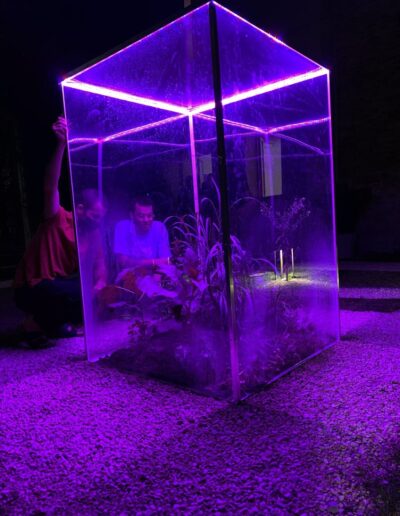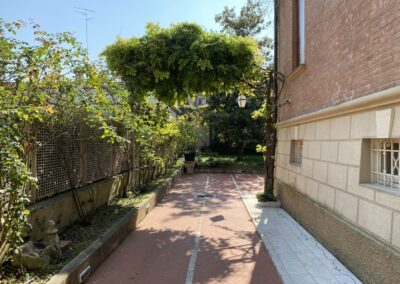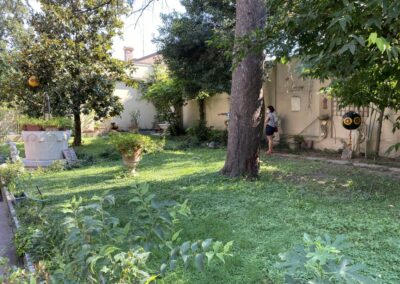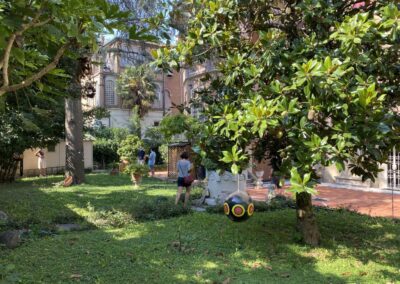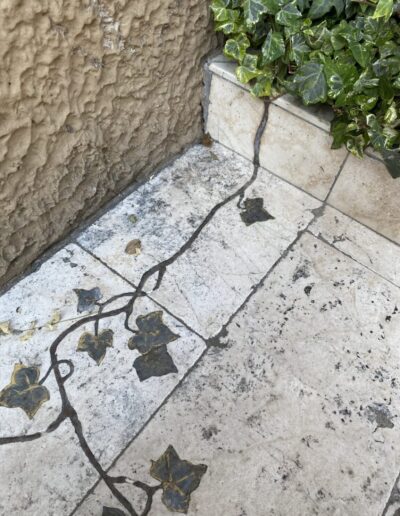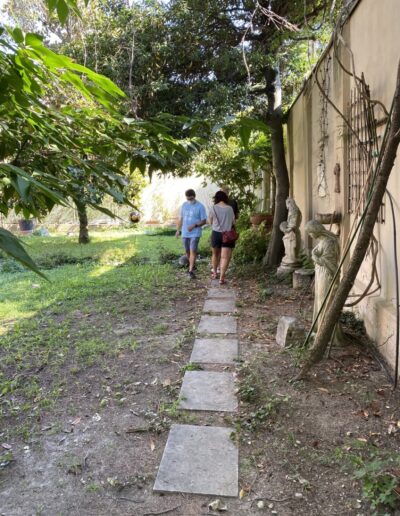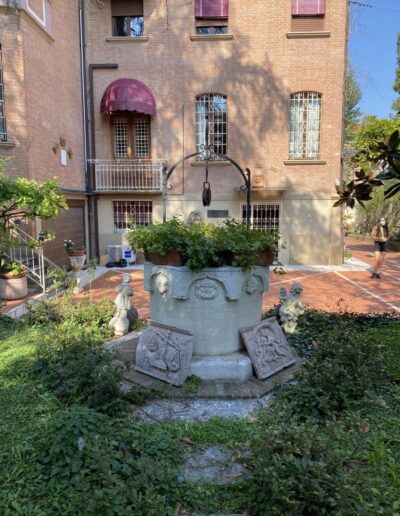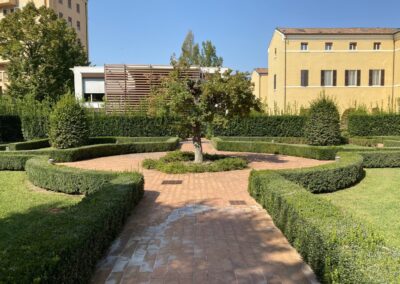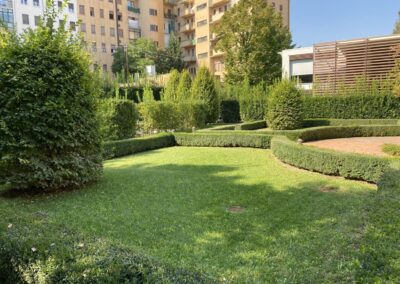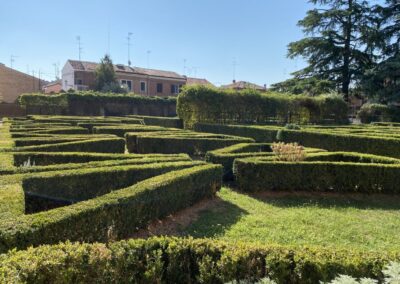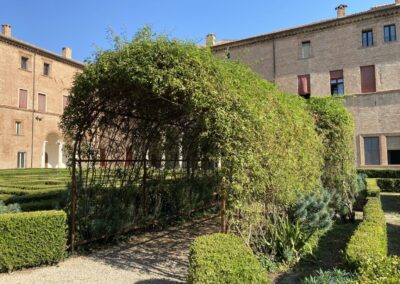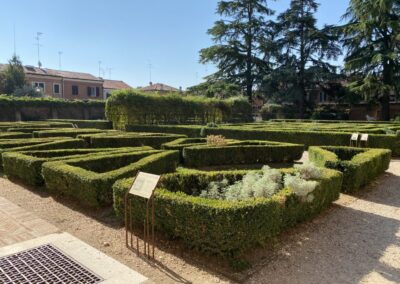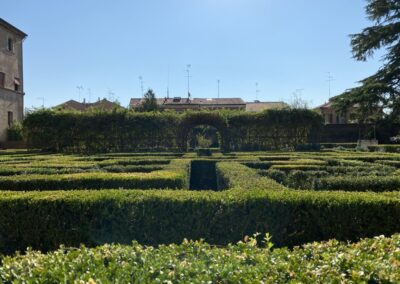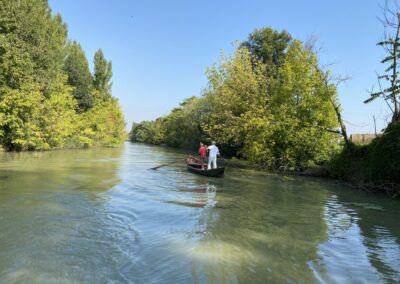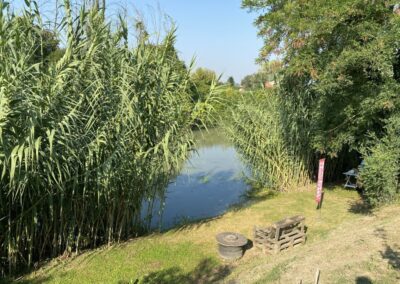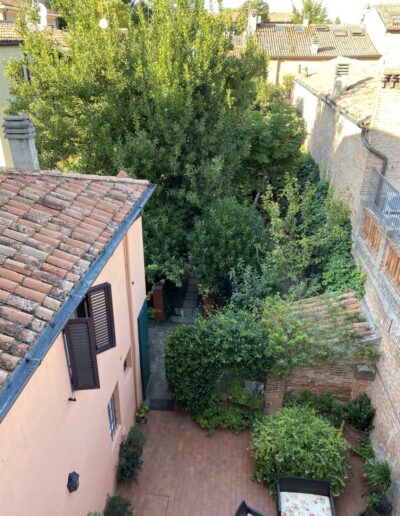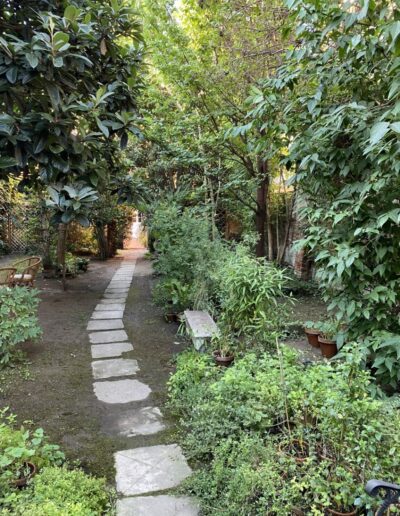
Green gems in a red casket – strolling through gardens in Ferrara
Giving a definition of “garden” can be a very simple or extremely complex matter; it all depends on the approaching perspective of the theme. If from an objective point of view, in the common vision, the concept and the physicality of the garden are in the mind of anyone, from a subjective point of view the garden can take on different declinations, shades of the same colour (mainly green), which they contribute to the vast canvas of landscape.
The path among the numerous gardens (71!) in the city of Ferrara, on the occasion of their opening during the Interno Verde event, held on Saturday 12 and Sunday 13 September 2020, offers a very interesting vision of these which aren’t only green spaces. What can be deduced, trying to wander between courtyards and alleys, is that gardens are stories that intertwine, pieces of existences, stratifications, memories, narratives that go beyond forms or vegetation. They are life, living beings, events containers. In short, they represent man.
The gardens of Ferrara are green gems enclosed by red coffers, the color of the walls and courtyards. Discovering them means discovering part of the owners’ lives, digging into their history, knowing the most interesting aspects of a place. The route winds through different areas of the city, even on the water. The variety of the gardens shows the incredible series of transformations undergone by the urban fabric, the alternation of families, the peculiarities of the guests who have opened the doors of their most cherished places. Even briefly tracing a description of all the gardens that can be visited would be very complex, and would still not do justice to an event to be experienced. What you can do is jump from one place to another, imagining yourself as literary travelers, scrolling the geographical map of Ferrara and pointing your finger, to find yourself inside these secret gardens.
At 21 in via Ugo Bassi we enter a small courtyard, where the contrast between the built and the vegetated is remarkable. We are welcomed by two squares, small in comparison to the height of the walls above them. In these spaces many plants are densely gathered, including palms, camellias, hydrangeas and gardenias. A place halfway between light and shadow, where the sun can struggle to enter, but not a cold place for this. By observing carefully we can see on the walls the signs of those transformations we were talking about: arches, loggias, portals, opened and closed over the centuries. The same space occupied by the garden was once covered with concrete, probably divided by family vicissitudes. It may happen, in the sunniest moments, to meet one of the most important inhabitants of the garden: a turtle, the owner of this green kingdom.
Moving to via Coramari, near the Convent of San Francesco, we enter a portion of the agricultural landscape in the city center. It wouldn’t be surprising, considering the important imprint left by the Estensi Gardens, but is still striking the rural charm of this urban garden, cultivated by Fra Graziano, who among free-range chickens and nocino demijohns left to macerate, enjoys the proximity to the earth and the things that grow (in this case plum, apple, grapevine, medlar, cherry, persimmon, jujube). The origin of this productive garden is to be found in about 1200, when the Franciscan friars elected it as a place of tranquility to cultivate. Since that time the changes have been numerous, with the construction of a first church, then a second one in 1341, the annexation of the bell tower in 1606 and the Napoleonic suppressions. Breathing in history becomes not only an expression, but a reality in these areas.
On the other hand, the garden of Palazzo Scroffa is of a more formal nature, where the owner family wanted, at the beginning of the twentieth century, to embellish their home with trees that nowadays flaunt all the grandeur of those plant beings that have long observed the lives; in particular a Judas tree with a trunk of considerable proportions (more than four meters). Different rose blooms correspond to each season, associated with agapants, nasturtiums, jasmines, camellias, hydrangeas and many other plants. Strolling in these gardens is a bit like digging through time, taking advantage of the moment, the instant in which it’s possible to enjoy their beauty.

A reflective pause is imposed in the rooms of the garden of the Ilturco association, which organizes the Interno Verde event. Here we find the minimalism of a labyrinth traced in gravel on the ground, a game of entrances that lead to new areas of the garden, on different levels. The perspectives are mixed, as well as the historical facts. It seems that a famous anatomist doctor of the sixteenth century, Giovanni Battista Canali, lived in the opposite building, and the remains of the bodies studied, previously affected by the plague, were buried in the garden. At the center of the labyrinth, on the occasion of the event, a transparent case was set up, containing a series of spontaneous herbs, typical of neglect in the streets and in the recesses of the gardens. Pioneer plants, shy or bursting herbaceous, illuminated at night, merge in a psychedelic work between nature and artifice.
Result of construction, demolition, reconstruction is also the courtyard in via degli Spadari, hidden, a place to meditate on the passage of time, among narrow paths where the strength of stone and brick resounds, welcomed by coolness and shade.

Of a completely different taste, between Art Nouveau and the rediscovery of a Renaissance style, in the early twentieth century the garden of the villa in Corso Vittorio Veneto 25 saw the light, resulting from an urban plan of the 1920s. Upon entering you are greeted by a magnificent arch of wisteria, a plant that will accompany throughout the path, surrounding the house, tangling itself on the railings. From nature to decoration, we may not notice (and it would be a real shame), another creeping plant, this time an ivy, artfully sculpted, a delicate plant tribute made by the owner, which climbs up stairways and walls, starting however from an authentic ivy. Continuing we’ll find numerous creative ideas on which to linger: statues in stone and iron, a n ancient looking well, a shell-shaped stoup, engraved plates immersed in greenery with a certain romanticism.
The history of the garden of the former Collegio Sant’Orsola is entrusted to the collective memory. Playground for children of the kindergarten run by the Ursuline nuns, over the years it has acquired a formal layout, and now, with a parking lot below, box hedges dominate the scene, dotted with aromatic herbs and pomegranates. It’s said that the pre-existing vegetable garden was cultivated by a nun, named Concordia, who had become a mythical figure thanks to the lack of a finger, perhaps cut off during the garden’s work, cared and always rich.

Remaining in the formal context, a visit to the garden in via XX Settembre 122, corresponding to Palazzo Ludovico il Moro, seat of the National Archaeological Museum, would be a must. A 1930s reconstruction of a typically Renaissance structure, additions followed in the 1950s and a restoration in 2010. Walking through the paths of this geometric paradise leads the mind into the abstraction of the labyrinths, green embroideries where resourcefulness takes on new meanings. Reaching spiritually reborn as far as the central well, resting in the shade of the pergola, happy to be part of that ancient art that is typical of gardens. Cedars, yews, pomegranates accompany the entrance, the passing of the visit and observe us at the exit, tireless guardians of the labyrinth.
The course of the day passes, and among artist gardens, urban wilderness, botanical collections, vegetable gardens, courtyards and hidden libraries, we realize that not all these fragments of a larger mosaic are on the mainland, or rather, some can be reached more easily by boat. Ferry on the course of the Po di Primaro, a delta branch of the river, we are led to other verdant universes overlooking the bank. There the tranquility of the flowing waters is cultivated and savored, sheltered from traffic and noise, in small plots of land enclosed in a sea of vetation, where life acquires lightness. Perhaps it’s letting thoughts and efforts be carried away by the current, perhaps it’s the proximity to nature, the fact is that calm and broad smiles reign in this place.
With this spirit of serenity, after a long wandering, it’s time for a well-deserved rest. A last garden awaits, that of the Gatti Turchini (Turquoise Cats). Here, always in the shelter of high walls, the sun touches fruit trees, silently makes its way through the mint, lemon balm, absinthe. Even the weary visitor can find shelter in this place, as sometimes do the turquoise cats, a rare literary species (fruit of the imagination of Charles de Brosses, Count of Tournay), which wanders in the alleys and rests peacefully at the windows of Ferrara, enjoying the beauty of the green immersed in red, among the intertwining lives, the stories that are told one after the other, covering themselves with the lively word-of-mouth patina, and the gazes of those who have stopped for a moment in these gardens, fleeting visitors or growers of their own existence.

